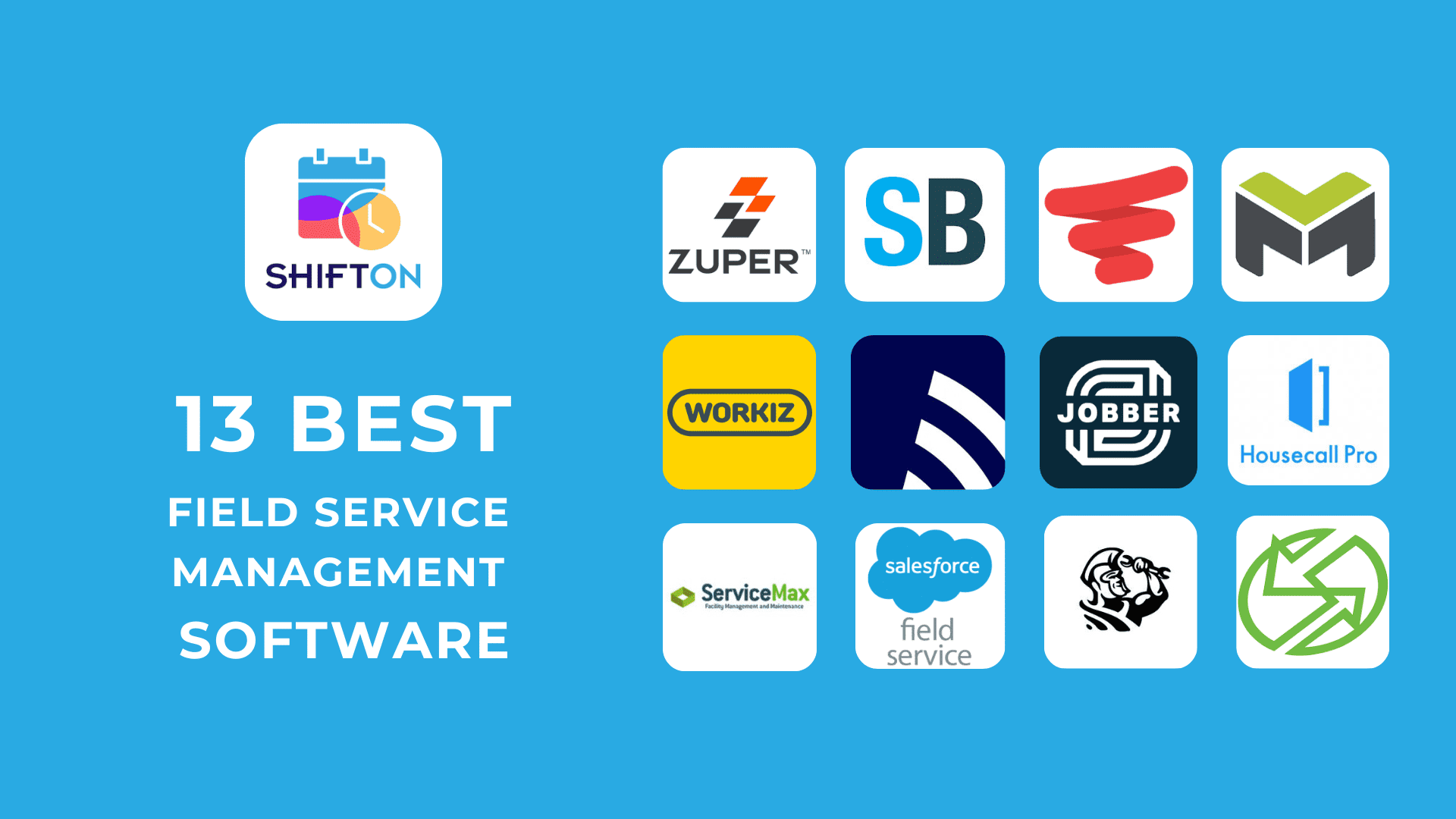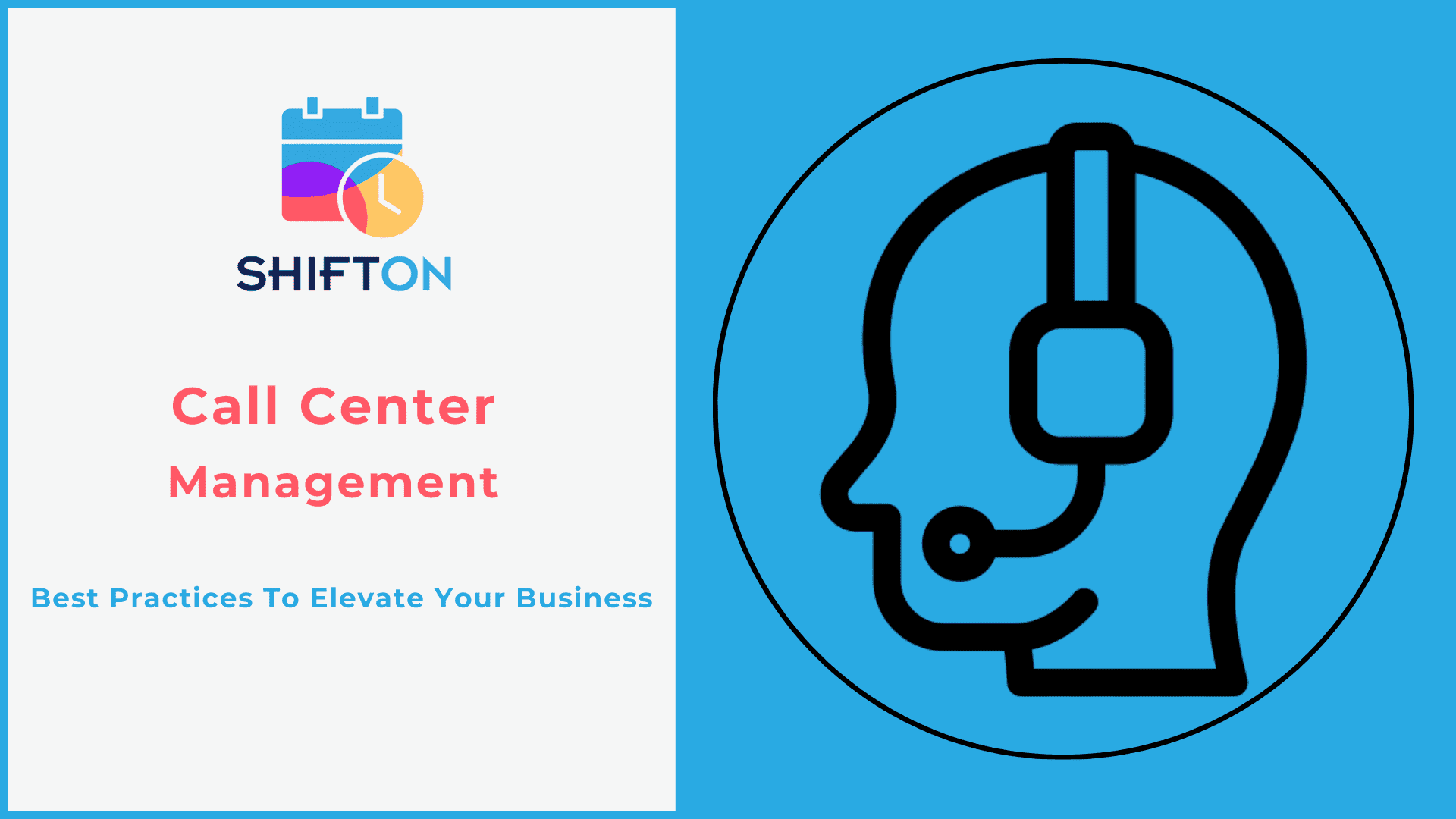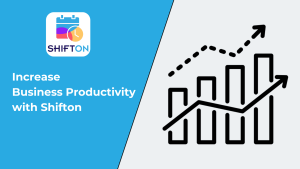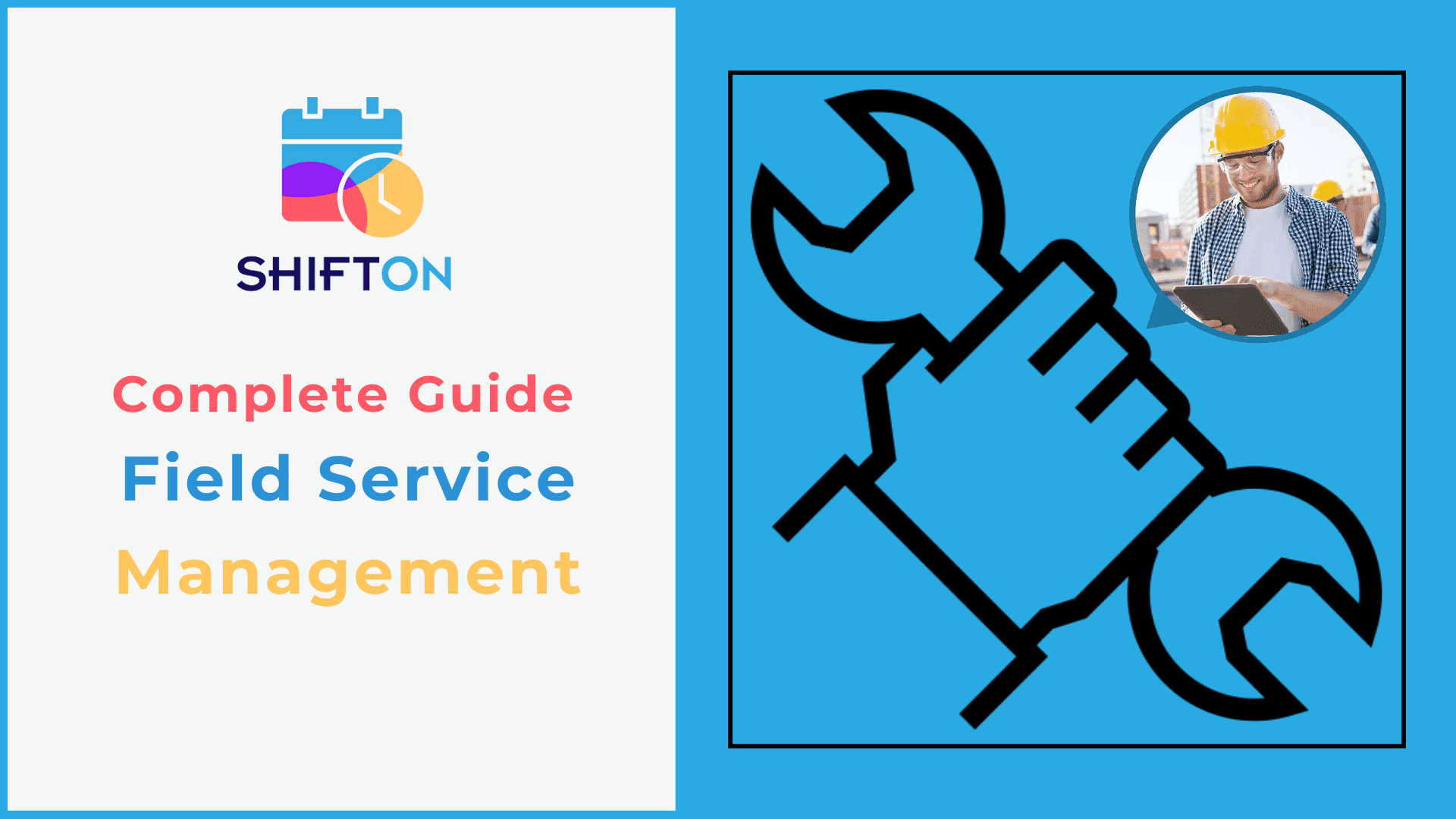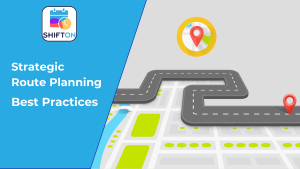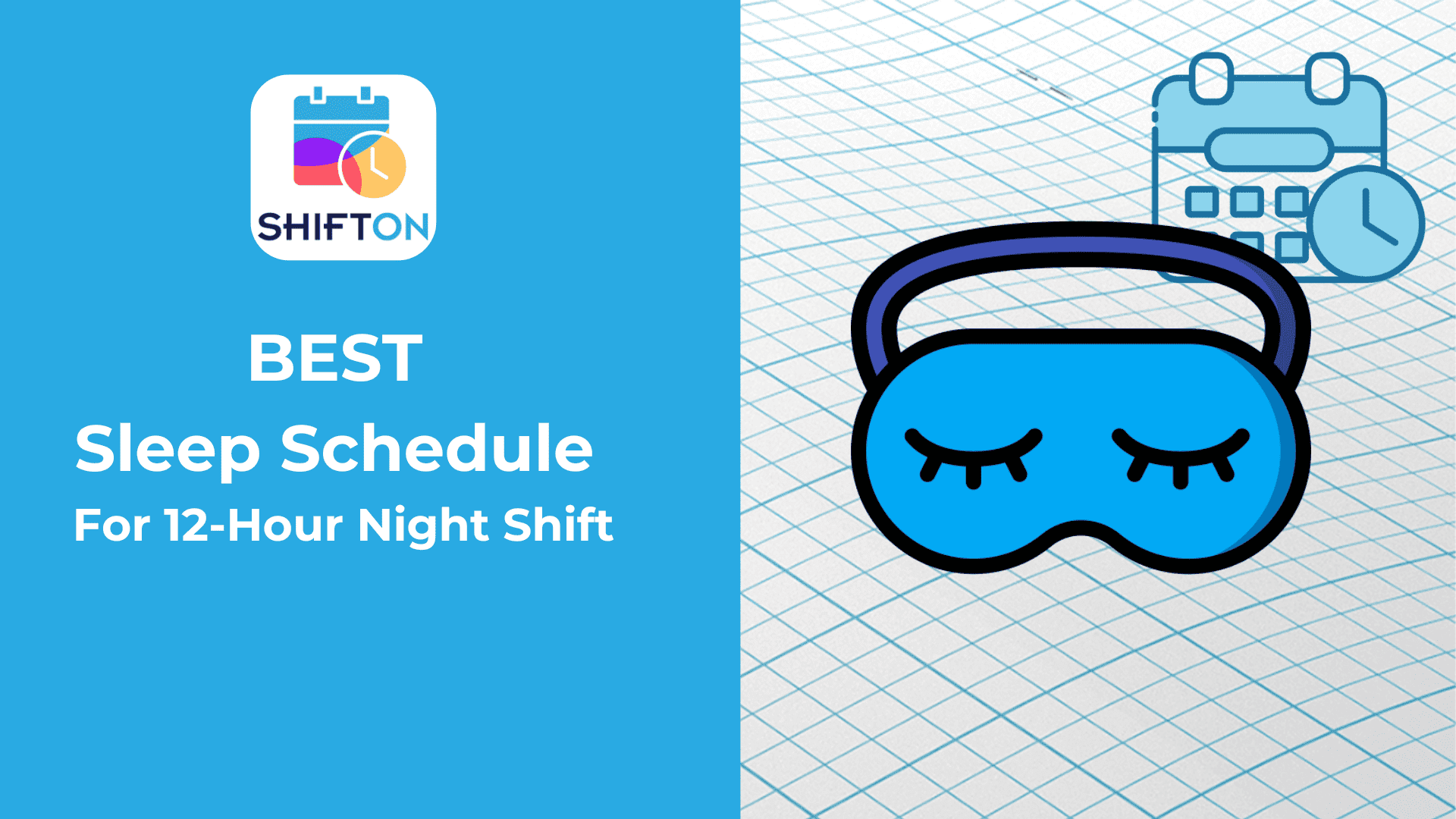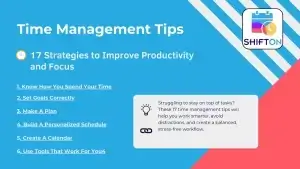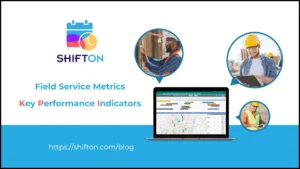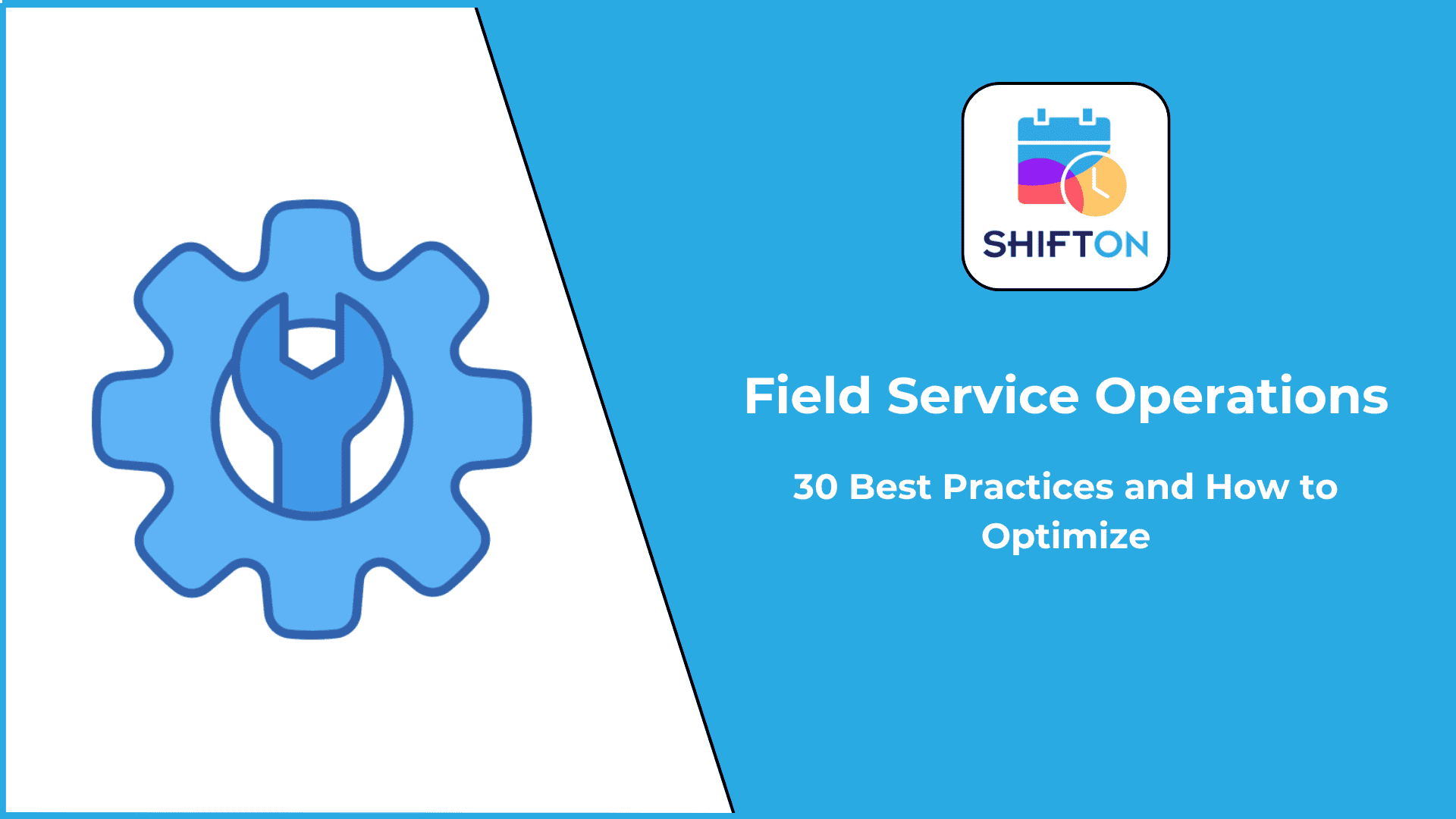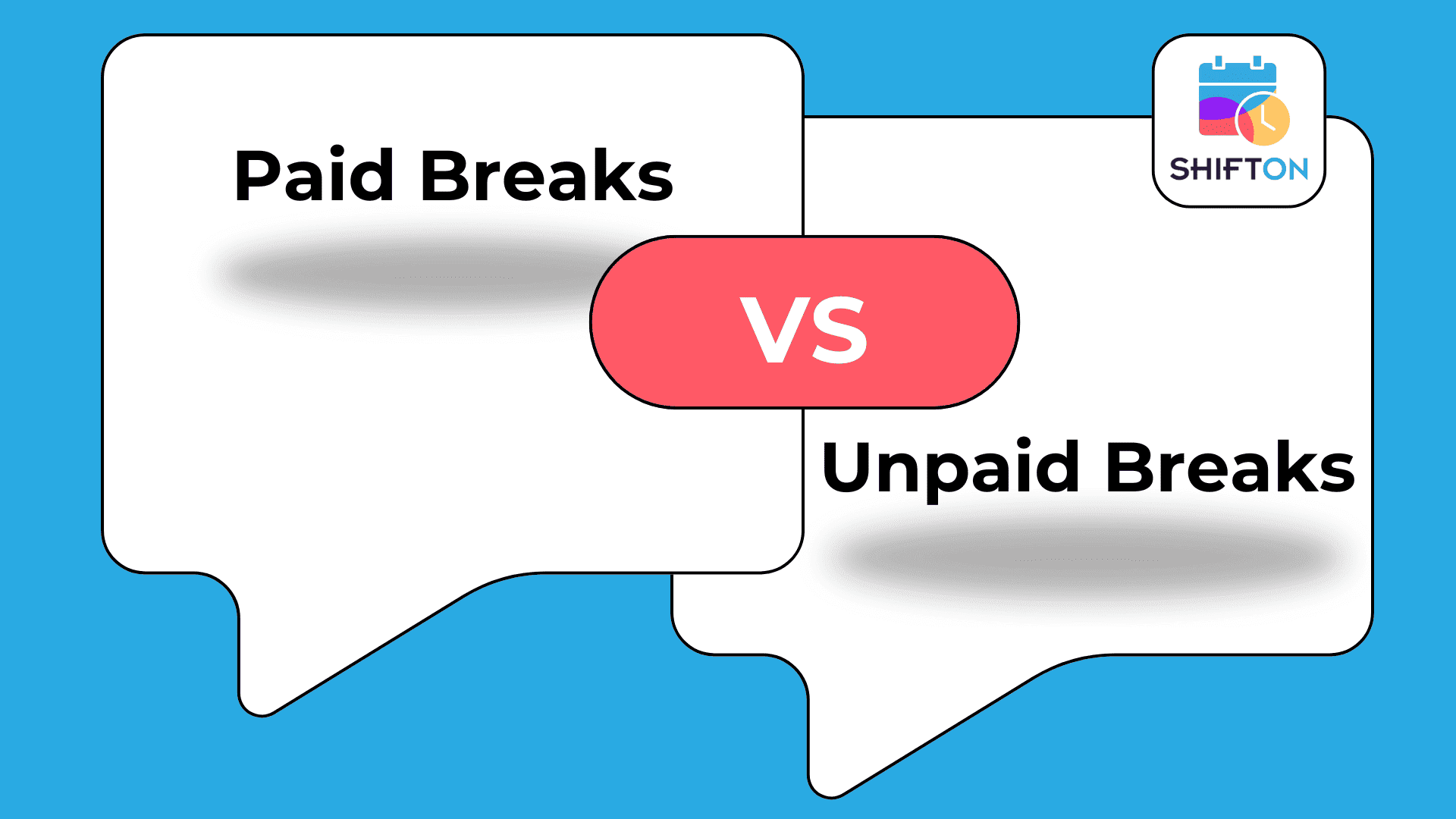You, a remote worker, need productivity when you require a field force manager and sales software for the administration of forces to deliver service effectively. It streamlines and automates everything from shipping and every facet from shipping to accounting and warehouse administration, enabling enterprises to reduce expenses, and boost customer satisfaction.
With an emphasis on field service management software products, this thorough overview examines the advantages, salient characteristics, and uses to administer staff members at a distance.
What is Field Service Management Software
What is field service management software? A digital application called Field Service, mobile workforce planning, and mobile software for the personnel administration. It assists companies with facilities tracking, ordering, dispatching engineers, and optimizing processes. The robust features of software enable organizations to do jobs effectively, enhance communication, and guarantee client pleasure.
A collection of business-critical proper means and functions to plan, execute, and monitor remote work duties are commonly integrated with Salesforce control software. Scheduling, service scheduling, work order monitoring, control asset whereabouts, and asset inventory tracking are all included in this.
Field service management software solutions frequently have the following essential features:
- Work Order Management: expedites the process of creating, allocating, and monitoring work orders to guarantee their timely execution;
- Dispatching: streamlines technician paths for effective service provision;
- Mobile Access: enable remote engineers to access mobile applications so they may connect with the office, view task data, and change statuses;
- Asset tracking: keeps an eye on the whereabouts and condition of property, plant, and office equipment to guard against loss and guarantee availability;
- Inventory management: monitors and places new purchase requisitions for goods as needed to avoid shortages;
- Client relationship management (CRM): Maintains client contacts and creates your maintenance records, strengthens bonds, and raises the caliber of services;
- Data-driven decision-making is made possible by reporting and analytics that offer insight into system behavior measures.
Field force execution enables the smooth integration of field and administrative staff personnel by offering a single platform for these tasks, reducing mistakes, and improving operating effectiveness.
What Are The Benefits Of Field Planning Software
The purpose of field service management software, sometimes referred to as help manage the field, is to make managing mobile workforces easier.
Businesses may increase productivity, save operating costs, and increase customer care through rationalization of processes such as control, planning, and notification. The key benefits of field service management software:
Increases Productivity And Uptime
Scheduling, automatic routing, and report generation with remote service administration software such as field service management software, which minimizes mistakes and human labor. This ensures that your staff can concentrate on important activities by increasing machine up-time and decreasing downtime.
Field service managers may more efficiently arrange assignments with the benefit of hindsight, which guarantees that professionals arrive at project locations on time and with the necessary equipment and knowledge to do their work. Productivity is greatly raised by reducing time waste and optimizing job distribution.
Empowers Technicians
Field service management software enables engineers to provide quicker and more precise service by giving you instant insight into real-time information and service history. It enables them to comprehend client concerns and resolve them successfully, and frequently at the initial appointment.
Technicians are better equipped to tackle complicated jobs and achieve greater first-time repair rates when they have access to comprehensive work orders, prior service notes, and client information. They can also record concerns, take pictures, and update job progress straight from the field thanks to mobile capabilities, which lessens the administrative burden.
Reduces Costs
By automating the billing process, reducing driving time, and optimizing the route planning, field service management software lowers expenses. Getting rid of pointless paperwork saves time and lowers mistakes, which eventually saves money.
Businesses may decrease fuel consumption, vehicle wear and tear, and overtime costs by implementing intelligent scheduling and dispatching. While precise billing guarantees that clients are charged appropriately and prevents revenue losses, automating repetitive procedures also helps to save labor expenses.
Boosts Customer Satisfaction
Field service management software makes sure that clients are informed and happy by offering real-time information, prompt communication. Long-term relationships and trust are fostered by prompt replies and effective service.
Customers feel more confident and are more satisfied when they are told about the technician’s availability, job status, and projected time of arrival. Being able to serve clients promptly and effectively guarantees a satisfying experience, which promotes loyalty and repeat business.
Customer Experience
Customers feel appreciated when there is better coordination, quicker reaction times, and open lines of communication. Field service management software guarantees a flawless client experience, which improves ratings and retention rates.
Businesses may surpass client expectations and guarantee a flawless service experience by implementing field service management software features like self-service portals, automatic notifications, and individualized customer communication. Customer satisfaction increases the likelihood that they will leave favorable reviews, refer others to the service, and utilize it again in the future.
What Does Field Service Management Involve
To serve clients efficiently and effectively within the field, field service management entails several procedures and tactics. It includes several tasks that guarantee efficient operations and excellent client satisfaction. The following are essential elements of field service management software:
Efficient Scheduling And Dispatching
Scheduling and assigning the appropriate technicians to the suitable work according to the site, schedule, and skill level is made simple with field service management software. This guarantees that jobs are finished promptly and cuts down on wait times.
Field service managers may guarantee that clients receive the best possible service by assigning the most qualified professional to each assignment through efficient scheduling. The software’s clever algorithm allows it to plan tasks in a way that minimizes travel time and increases efficiency, which lowers operating expenses.
Service Planning And Management Of Digital Work Orders
Automate the process of creating and managing work orders. Field service management software makes it simple to track and update jobs, ensuring that nothing is overlooked. Paper forms are no longer necessary thanks to digital work orders, which guarantee that all data is appropriately recorded and available to all parties involved.
This helps companies react swiftly to any modifications or client requirements by facilitating quicker approval procedures, more efficient workflow, and real-time task status notifications.
Customer Interaction And Communication
Customers are kept informed about technician arrival times, job status, and any modifications to service schedules using field service management software, which has integrated communication facilities.
Building trust with consumers is facilitated by proactive and transparent communication, which keeps them updated on the service procedure. Better client interactions and overall service delivery result from this.
Seamless Invoicing And Billing
Automated invoicing lowers billing mistakes and expedites the payment process. Field service management software ensures that bills are issued on time by integrating invoicing with service completion. Precise billing guarantees that companies are promptly compensated for the field services management software rendered.
By integrating billing with service records, all billing is accurate and transparent, which lowers disputes and guarantees that clients are paid appropriately for the field services management software they get.
Real-Time Reporting And Insight
Receive up-to-date information about technician activities, performance, and field operations. Businesses may make data-driven choices with the use of field service management software, which offers insightful information.
Field service managers may pinpoint areas for development and enhance their service delivery by using data on customer feedback, technician productivity, service performance, and more. Additionally, real-time analytics enable a quicker reaction to problems as they emerge, guaranteeing that any interruptions are promptly fixed.
Flexibility And Adaptability To Changing Circumstances
Field servicing frequently entails unforeseen adjustments. Your team can adjust to unforeseen changes without any problems thanks to field service management software, which provides flexible scheduling and fast rescheduling.
Companies can easily manage last-minute cancellations, reschedule assignments, or provide more staff as required. This adaptability is essential to guarantee that client’s requirements are satisfied even in the face of unanticipated difficulties.
Inventory And Asset Tracking
Utilize field service management software, inventory management capability to keep track of tools, equipment, and replacement components. By ensuring that your specialists have the tools they require, you can cut down on delays and increase service effectiveness.
Businesses may guarantee that they always have the required equipment and components for manual operation, thereby increasing to increase on-site worker performance and reducing downtime, by maintaining precise inventory and asset records. Additionally, this aids in preventing overstocking and understocking, which may result in extra expenses or delays in service.
Integratie Met Andere Systemen
Field service management software offers a holistic approach to business administration by integrating with third-party applications, like billing applications, CRM, and ERP. By providing a consistent workflow among multiple systems, this feature enhances collaborative interdepartmental efforts and communication.
Companies may increase overall efficiency by streamlining procedures, increasing data accuracy, and minimizing the need for human data entry.
Mobility And Offline Access
Technicians frequently operate in locations without internet connectivity. Because field service management software has offline capabilities, users may access critical data and update tasks even when there is no internet connection.
This guarantees that field employees can carry out their duties efficiently wherever they are. The program makes sure that all changes are appropriately reflected in the system by immediately syncing the data when an internet connection is restored.
Custom Forms And Workflows
Make unique processes and forms based on your company’s requirements. Businesses may create and execute distinctive procedures using field service management software, guaranteeing operational consistency.
Adapting to fit is crucial for companies with particular needs or those working in specialized fields. By optimizing the way you work with configurable workflows, businesses can ensure correct and efficient job completion.
Why Do Service Businesses Need FSM Software Today
Numerous advantages provided by field service management software have the potential to revolutionize the operations of service firms. Organizations may increase their overall performance and efficiency by utilizing cutting-edge technology. The following are some of the main benefits of using field service management software:
- Productivity and Efficiency: Automate manual procedures to cut down on mistakes;
- Cost Reduction: Reduce operating expenses by streamlining processes;
- Better Customer Experience: Improve service delivery and communication;
- Scalability: Control expansion without using excessive amounts of resources;
- Data-Driven Decision-Making: Strategic planning is aided by having access to real-time data.
Businesses may improve everyday operations and provide a more customer-focused and responsive service environment by combining these advantages. Adopting field service management software is essential to achieving lasting results and preserving a competitive advantage in the marketplace.
Common Industrial Applications of Field Service Management Software
With its ability to streamline field operations and improve service delivery, field service management software has emerged as a crucial tool for a variety of businesses. Its applications span several industries, each of which gains from customized field service management software solutions that tackle particular operating difficulties. Some of the most popular industrial uses for field service management software are as follows:
AC
A key factor in increasing operational effectiveness and raising customer satisfaction is field service management software, AC made especially for air conditioning (AC) companies. This software optimizes productivity and guarantees the timely completion of all jobs by offering a consolidated platform to handle different components of the service process.
The capacity of field services management software to effectively manage service requests is one of its primary characteristics. The program enables companies to promptly and precisely record client inquiries about problems with their air conditioning systems. This helps the team to efficiently prioritize critical instances and guarantees that no service request is overlooked.
Agriculture
Use field service management software in agriculture to effectively manage fieldwork and agricultural equipment maintenance. By automating scheduling, monitoring maintenance requirements, and managing work orders in real-time, this all-inclusive tool helps farmers and agricultural enterprises optimize their operations. Shifton’s user-friendly interface makes it simple for users to keep an eye on to ensure that the equipment, guarantees prompt repair to avoid expensive downtime.
Task distribution to field personnel is made possible by the software, which maximizes labor efficiency and boosts output. Shifton’s FSM software uses data-driven insights to assist agricultural organizations make better decisions, manage resources better, and eventually increase production.
Shifton offers the essential features you must have to ensure that your machinery and supervise field work, whether you are running a small or large farm. This improves operational effectiveness and boosts profitability.
Building Comp
Field service management software building comp offers a complete solution that guarantees the timely completion of projects, greatly improving efficient planning and communication for construction organizations. Shifton’s software minimizes the time spent coordinating activities across several teams and avoids manual mistakes by automating field service management and scheduling software operations.
It also makes it easier for clients, project field service managers, and field personnel to communicate with one another, enabling real-time updates and prompt problem-solving. In addition to improving overall risk management, this integrated strategy fosters team communication, which boosts output and streamlines processes.
Building organizations can more easily allocate project resources, manage visibility into project progress, and uphold high standards of quality using Shifton’s software, which eventually leads to happy clients and successful project outcomes.
Catering / Events
You can easily plan every part of the event setup using field service management software catering/events, making sure that everything goes without a hitch from beginning to end. You can effectively manage inventory with the program, which tracks equipment and supplies in real time to avoid shortages and make sure you have everything you need on hand. It also makes managing client requests easier, allowing you to react to questions or modifications promptly and efficiently.
Shifton’s FSM software greatly raises customer satisfaction while at the same time enhancing operative efficiency by optimizing these procedures. User-friendly interfaces and intuitive field service management software features free you from the burden of logistical issues so you can concentrate more on providing a remarkable event experience. Leverage Shifton’s FSM software to take your event management to the next level.
Cleaning
For cleaning businesses looking to improve both the service level and operational efficiency, field service management software is the perfect answer. It makes it simple for companies to handle work orders, set up routine cleaning appointments, and monitor the real-time availability of their cleaning crews.
This skill is essential for maximizing employee use, cutting down on idle time, and guaranteeing that customers receive prompt, effective service.
Additionally, the program provides tools like automatic reminders for clients and employees, which reduce missed appointments and enhance communication. Besides, automated invoicing streamlines the billing process, reducing paperwork and ensuring timely delivery, payment collection. Cleaning businesses may concentrate on providing top-notch services and raising client satisfaction levels by simplifying these procedures.
Construction
Because construction projects are complicated and always changing, it can be especially difficult to manage several teams, tools, and schedules. Every aspect, from organizing subcontractors to guaranteeing material availability, needs to be carefully planned and carried out.
To overcome these obstacles, Shifton’s field service management software construction is essential as it offers a complete solution for efficiently managing materials, scheduling work, and monitoring project progress.
Construction field service managers can quickly assign tasks to team members, distribute resources, and track their progress in real time with Shifton’s FSM software. Better monitoring and accountability are made possible by this capability, which guarantees that everyone is aware of their duties and due dates.
The program also offers job progress tracking capabilities, which aid in the early detection of any delays or bottlenecks and allow for proactive modifications to maintain project momentum.
Delivery
Delivery companies may dramatically enhance their operating efficiency and service quality by utilizing Shifton’s software. The field service management software delivery helps cut down on fuel use and travel time, which lowers costs and reduces carbon emissions.
Real-time vehicle tracking enables field service managers to keep an eye on each delivery’s progress and make sure that any possible delays are quickly detected and fixed. By optimizing resource allocation and cutting down on idle time, this proactive strategy not only guarantees on-time delivery but also improves the logistics process as a whole.
Electricians
Field service management software electricians give electricians access to precise task details, location data, and an extensive work order history, all of which are very beneficial. Electricians may optimize their everyday operations with the help of Shifton’s FSM software.
Electricians can comprehend the details of each task before they get on site because of the software’s real-time access to crucial information. Along with the job description, this also contains pertinent client remarks and records of prior field services management software. By making sure they have the appropriate equipment and supplies on hand, these insights enable them to plan effectively, reducing delays and increasing productivity.
Entertainment
For their initiatives to be successful, event and entertainment firms frequently need careful preparation and coordination. These companies have to balance a lot of responsibilities, such as staffing and logistical management, while still providing their customers and guests with a flawless experience.
By giving event field service managers the resources they require to function effectively, Shifton’s field service management software entertainment tackles these issues.
Event organizers can simply keep track of equipment inventory using Shifton’s software, making sure that everything they need is on hand and in excellent working order for every event. The technology makes it possible to schedule teams precisely, which optimizes labor resources and guarantees that the appropriate people are present at the appropriate moment.
The software is also made to easily accommodate last-minute modifications, enabling management to adjust to unanticipated events without affecting the overall quality of the service.
Field Services
Shifton’s field service management software field services offers a strong solution for companies that provide general field services management software, streamlining several operational procedures such as asset monitoring, personnel scheduling, and service delivery.
With the help of this all-inclusive platform, field service managers can effectively monitor team performance and resource allocation by having real-time visibility into every area of their operations.
Field service managers may easily allocate assignments based on technician availability and competence, coordinate projects, and make sure resources are used as efficiently as possible with Shifton’s platform. Businesses can quickly adjust to any unanticipated changes or emergencies in the field thanks to this capability, which also increases productivity and reaction times.
Garage Door
Using field service management software, a garage door may greatly help garage door service businesses operate more efficiently. They can effectively manage inventory, set up appointments, and track service requests thanks to this technology—all crucial for providing prompt and efficient service.
Garage door service firms may easily coordinate with their specialists in the field by using Shifton’s field services management software. Because of the software’s real-time updates, technicians may be informed instantly of any new service requests, schedule modifications, or urgent issues that require care.
This degree of communication guarantees that clients are informed at every stage of the service process and improves responsiveness.
Handyman
Handyman field services management software covers anything from simple installs and maintenance to intricate home remodeling jobs. For these companies to guarantee on-time service delivery and optimize production, efficient scheduling, and resource management are essential. Shifton’s field service management software handyman (FSM) software is made especially to deal with these issues by improving overall efficiency and simplifying processes.
Handyman companies may allocate projects according to the particular abilities and knowledge of their experts using Shifton’s FSM software, guaranteeing that the appropriate individual is sent out for every work. This raises consumer satisfaction levels in addition to improving the caliber of field services management software rendered.
Effective work order management is made possible by the software, which enables companies to monitor each job’s progress in real-time and modify schedules as needed.
Home Care
Using field service management software, home care can help home care providers improve the quality of care they give and streamline their operations. They may effectively plan caregiver visits with the help of this program, guaranteeing that clients receive timely, suitable support that is catered to their specific requirements. Care providers can keep thorough records that improve communication and care continuity by monitoring client interactions.
Additionally, field services management software gives home care providers the ability to efficiently manage care plans, guaranteeing that all caregivers have access to the most recent data about the health and preferences of their clients.
Shifton’s software goes one step further by giving caregivers the necessary information at their fingertips so they can provide reliable, superior care. In addition to fostering solid customer connections, this also guarantees adherence to legal requirements and improves overall operational effectiveness.
Home Remodeling/Repair
Projects involving home repair and remodeling may be complicated affairs, sometimes requiring several contractors and moving components. It might be difficult to manage deadlines, coordinate the activities of many teams, and make sure that everyone agrees.
This complex procedure is made simpler by Shifton’s field service management software home remodeling/repair (FSM) software, which gives project managers the ability to effectively plan jobs and track advancement in real-time.
Project managers may make comprehensive schedules that cover each stage of the renovation project using Shifton’s FSM software. This entails giving contractors particular assignments, establishing due dates, and monitoring the advancement of each team.
Project field service managers may promptly spot any possible delays or bottlenecks by centralizing this data, enabling them to make proactive changes to keep the project moving forward.
HVAC
Field service management software for HVAC is very beneficial for HVAC companies. The platform from Shifton was created especially to handle the particular difficulties that the HVAC sector faces, offering all-inclusive field service management software solutions that improve operational effectiveness.
With the help of the software, companies can efficiently plan maintenance visits, guaranteeing that specialists are sent out at the best times to satisfy client demands.
Shifton’s platform not only facilitates scheduling, but also effectively manages parts inventory, guaranteeing that technicians have the parts they need on hand for maintenance and repair work. This improves overall service quality by minimizing downtime and reducing delays brought on by missing parts.
Landscaping
Shifton’s field service management software landscaping may help landscaping businesses increase service delivery and streamline operations. With the help of this software, businesses can efficiently oversee seasonal field services management software like garden design, snow removal, and grass maintenance, guaranteeing that they always live up to client expectations.
Regular visitation allows landscaping companies to be present and build lasting connections with customers, which increases client loyalty.
To maximize the lifespan of tools and machines, the program also helps track equipment maintenance and usage. Businesses may prevent unplanned malfunctions that could interrupt operations and need expensive repairs by implementing early notifications and maintenance plans.
Lawn Care
Effective field service management and scheduling software and route optimization are essential for lawn care companies to have a competitive advantage and guarantee client pleasure. Operational effectiveness and service quality are directly impacted by the proper management. A variety of effective solutions created especially to improve these activities are available in Shifton’s field service management software, lawn care.
Shifton’s FSM software makes it simple for lawn care businesses to plan routine maintenance visits, guaranteeing that customers receive prompt, reliable service. In addition to preserving the lawn’s health, this proactive strategy fosters consumer loyalty and trust.
Businesses may minimize fuel expenses and travel time by using the software’s route optimization tools to determine the most effective routes for their service teams.
Moving
By giving companies a full range of options to improve operational efficiency, Shifton’s field service management software moving transforms the moving process. The program simplifies every part of the moving process with capabilities that make it easier to plan routes, schedule personnel, and follow the status of vehicles in real-time.
Moving businesses may save fuel expenses, maximize travel times, and guarantee staff are on location on time by strategically organizing their routes. By properly allocating resources and guaranteeing that the appropriate team is available for every task, the scheduling skills enable field service managers to minimize any delays.
Painting
Using field service management software, painting to improve client communication and operational efficiency may be quite beneficial for painters. They may schedule projects with ease thanks to this program, which guarantees that all the tasks are well-organized and that deadlines are reached without misunderstanding. Painters can prevent delays brought on by stock shortages and preserve a smooth workflow by monitoring paint supply and inventory levels in real-time.
Furthermore, in the painting business, good client communication is essential. By offering resources for prompt updates and progress reports, Shifton’s platform makes it possible for painters to keep clients updated on the status of their projects.
Pest Control
Shifton’s field service management software, pest control may greatly help pest control businesses by optimizing many operational procedures. With the help of the software, companies can effectively plan routine client visits, guaranteeing prompt interventions and preventative care. By tracking treatment programs, pest control experts may keep an eye on how well their services are working over time and modify their tactics to handle particular infestations or client issues.
Additionally, Shifton’s FSM software improves technicians’ route management by streamlining travel routes to reduce downtime and increase efficiency. Instead of spending time caught in traffic, this feature makes sure that technicians spend more time providing field services management software.
Plumbers
Shifton’s field service management software for plumbers is a great tool for plumbing companies since it simplifies several operational procedures. It effectively handles field services management software, routine maintenance plans, and emergency calls, guaranteeing that plumbing businesses can react quickly to client demands.
The program helps arrange normal maintenance activities to guarantee that customers receive consistent care in addition to tracking and prioritizing emergency service calls, which allows plumbers to respond to critical problems promptly. Plumbing specialists may anticipate client requirements and provide proactive care by using Shifton’s software, which maintains thorough records of previous service histories and maintenance programs.
Pool Maintainer
Field service management software pool maintainer may significantly improve the operational efficiency of pool maintenance companies. This program makes it simple for businesses to plan routine maintenance and cleaning procedures, guaranteeing that pools are constantly kept immaculate for their customers. Additionally, the platform enables efficient chemical supply tracking, which helps companies maintain ideal chemical levels and guarantees adherence to safety standards.
Pool service providers may effectively distribute resources and reduce field service management and scheduling software conflicts by using Shifton’s platform, which provides a full solution for managing client appointments.
The program also streamlines invoicing and money collection by automating the billing process. In addition to lowering administrative workloads, this improves cash flow management and guarantees that companies are paid on time for their field services management software.
Professional Services
Using Shifton’s software may be very advantageous for professional field services management software that needs on-site visits, such as consulting, auditing, or IT assistance. Organizations can easily manage projects, maintain customer history, and book appointments with this cutting-edge field service management software professional services tool.
Shifton’s software reduces the possibility of double booking and guarantees that service providers may efficiently manage their time by automating the scheduling process. Additionally, it makes it easier to manage client interactions and project milestones, which helps teams have a thorough grasp of each client’s particular wants and expectations.
Public Services
Field service management software in the public services may greatly simplify operations for public sector organizations, such as utilities and municipal field services management software. These organizations frequently deal with difficult problems in emergency response, resource allocation, and service delivery. Shifton’s platform offers a thorough resolution to these problems, allowing agencies to efficiently oversee their field activities.
Agencies may effectively send teams to different places using Shifton’s platform, guaranteeing that the correct people with the necessary talents are dispatched to handle certain situations. This lowers reaction times and maximizes resource utilization, all of which are critical in emergencies where prompt action may make all the difference.
Refrigerate
Shifton’s software, which provides a complete solution for controlling their operations, is quite advantageous for businesses that offer refrigeration field services management software. The program makes it possible to schedule maintenance chores effectively, guaranteeing that service appointments are maximized and synchronized with the availability of professionals. Businesses may reduce wait times and improve customer satisfaction by managing schedules well.
Shifton’s field service management software refrigerate enables companies to schedule as well as track inventories and components in real-time. For prompt repairs, this function makes sure that all required parts are easily accessible. Technicians may avoid service delays by promptly identifying and ordering any missing components thanks to instant access to inventory data.
Roofing
By using field service management software, roofing firms may greatly improve their performance. With the help of this software, they can effectively plan work schedules and make sure that teams are sent to job locations with the appropriate tools and at the appropriate times. Additionally, it makes equipment management easier, allowing roofing businesses to monitor tools and machines, reducing downtime, and increasing production.
In the roofing sector, efficient material monitoring is essential since it guarantees that supplies are accessible when needed, minimizing delays and any project overruns. In this regard, Shifton’s platform shines because it offers strong inventory management tools that enable roofing businesses to keep an eye on material levels and place automated supply orders.
Security
Security service companies may improve their operations in several important ways by utilizing Shifton’s field service management software. The program makes it possible to handle guard schedules effectively, guaranteeing that security guards are stationed at the appropriate times and locations. Maintaining a constant security presence is necessary to stop events and deal with any threats, and this skill is crucial for doing so.
The FSM software from Shifton makes it possible to track patrol routes in real-time. By using this tool, security field service managers may keep an eye on their staff’s activities and make sure that guards are following approved routes and doing comprehensive inspections. Security professionals can detect any deviations or overlooked locations by monitoring patrol routes, enabling prompt remedial action.
Snow Removal
Snow removal companies work in a dynamic environment where success depends on their ability to react quickly to shifting weather conditions. These businesses must have a dependable structure in place to efficiently manage their operations given the unpredictable nature of winter storms. Simplifying these procedures is made possible in large part by Shifton’s field service management software, snow removal.
Businesses may use the program to determine the best routes for snow removal while accounting for road conditions and real-time meteorological data. By taking a proactive stance, staff are sent to the areas that require urgent care, increasing productivity and cutting down on response times.
Social Care
Shifton’s field service management software, which is intended to improve the effectiveness and caliber of care delivery, might be of great use to social care providers. With the help of this cutting-edge software, organizations can efficiently plan caregiver visits, guaranteeing that clients receive timely, reliable support that is catered to their specific requirements.
Furthermore, Shifton’s FSM software allows for the maintenance of thorough client care plans, which are essential for monitoring development and modifying services as needed. Thus, caregivers can effortlessly monitor each client’s needs and preferences to offer effective and individualized care.
Solar Field Service
By using field service management software, solar field service can automate certain duties, and solar field service management software companies may greatly improve their operations. They can efficiently plan installations, oversee continuing maintenance, and closely monitor equipment during its whole lifespan with the help of this program. By utilizing Shifton’s platform, solar companies make sure that their professionals have all the resources and knowledge required to carry out their duties properly and efficiently.
Shifton’s software, which has capabilities to improve scheduling, enables service providers to strategically deploy resources, guaranteeing that specialists are sent to maintenance and installation tasks at the appropriate times. By cutting down on service wait times, this proactive field service management and scheduling software not only decreases downtime but also raises customer satisfaction.
Transportation
With Shifton’s field service management software, transportation businesses can design effective routes, track vehicle maintenance, and improve fleet operations. It offers real-time vehicle status information, which aids in better scheduling, lower fuel expenses, and improved fleet management in general.
These sector-specific applications show how Shifton’s FSM software can be tailored to meet different company requirements, offering effective ways to boost customer happiness, service delivery, and overall efficiency.
Top 15 Trends to Watch Out for in Field Service Management
Technology breakthroughs and shifting consumer demands are driving a continuous transformation in the field services management software environment. For companies hoping to improve their operational efficiency and service delivery, being ahead of the curve is essential. The following are some of the most important developments in field services management software to keep an eye on:
1. Self-service Portals
Self-service portals provide clients the ability to plan appointments, handle service inquiries, and monitor order status. By offering ease and lessening the effort for field services management software operators, this trend improves the client experience.
2. Cashless and Mobile Payments
The field services management software sector is increasingly embracing mobile and cashless payment methods. Using mobile devices, technicians may collect payments on-site, streamlining transactions and raising customer satisfaction.
3. Contactless Field Service and Support
Contactless field services management software has grown in favor as distant work and safety concerns have increased. Technicians may assist without physically visiting the customer’s location by using mobile applications, video conversations, and remote diagnostics, guaranteeing efficiency and safety.
4. Proactive and Predictive Maintenance
Data analytics are used in proactive and predictive maintenance to foresee equipment breakdowns before they occur. This aids companies in improving service quality, minimizing downtime, and scheduling maintenance at the best periods.
5. Backend Process Automation
Error risk is decreased and manual labor is reduced when backend procedures like scheduling, inventory management, and billing are automated. Businesses may increase productivity, save time, and streamline operations thanks to this trend.
6. IoT and Remote Monitoring
Real-time equipment monitoring is made possible by the incorporation of IoT devices into field services management software. By seeing any problems before they become serious, remote monitoring makes sure that professionals are only called in when needed.
7. Artificial Intelligence
AI-powered systems can recommend the most qualified technicians for certain jobs, optimize routes, and evaluate enormous volumes of data. Additionally, machine learning algorithms can forecast maintenance requirements, allowing businesses to proactively address problems.
8. Mobile and Cloud Solutions
Technicians may access task information, change work orders, and interact with the back office in real-time with mobile and cloud-based FSM systems. This trend increases field operations’ flexibility and makes it easier to provide field services management software efficiently.
9. Sustainability and Green Initiatives
Businesses are adopting eco-friendly strategies as a result of the increased emphasis on sustainability. Field services management software may measure carbon footprints, encourage the use of energy-efficient equipment, and optimize routes to consume less gasoline.
10. Predictive Analytics for Demand Forecasting
Businesses can estimate service demand, control inventory levels, and make sure technicians have the proper tools and supplies with the use of predictive analytics. Better customer service and more effective resource planning are the results of this trend.
11. Wearable Technology
Wearable technology, like smart watches and eyewear, is being utilized to help technicians out in the field. They improve the effectiveness and security of field operations by offering hands-free access to instructions, real-time communication, and augmented reality support.
12. Collaborative Tools
Effective communication between technicians and the back office is made possible by collaboration tools. Teams may improve service delivery by working together to swiftly address issues through the use of shared documents, video conferencing, and real-time chat.
13. Energy Management
FSM software’s energy management tools make it easier to monitor energy use and enhance equipment performance. This trend helps businesses’ environmental objectives, lowers operating costs, and encourages energy efficiency.
14. Regulatory Compliance and Reporting
Field services management software can help businesses adhere to industry standards. It ensures that all safety procedures are followed, tracks certifications, and automates the creation of compliance reports.
15. Global Expansion
Field services management software systems that can accommodate multilingual interfaces, many currencies, and various regional rules are becoming more and more necessary as firms grow internationally. Cross-border activities are made easier by this trend.
Overcoming Field Service Management Challenges with FSM Software
A distinct set of difficulties that might impede customer satisfaction and operational effectiveness are presented by field services management software (FSM). FSM software implementation, however, may greatly assist enterprises in overcoming these challenges. The following are a few of the most typical problems in field services management software and how FSM software may help:
1. Tracking Field Service Technicians
Monitoring the whereabouts and work status of field service specialists is one of the main obstacles. Field service managers can keep an eye on technician movements and guarantee effective work distribution using Shifton’s FSM software, which offers real-time tracking.
2. Resource Scheduling
Effective field service management and scheduling software is essential for field service companies. By automating the scheduling process, Shifton’s software makes sure that the appropriate specialist is paired with the proper task, cutting down on downtime and increasing output.
3. Real-Time Visibility
Businesses can react swiftly to changes when they have real-time visibility into operations. Field service managers may make well-informed choices thanks to Shifton’s FSM platform, which offers updates on work status, technician location, and client demands.
4. First-Time Fix Rates
For customers to be satisfied, first-time repair rates must be increased. To ensure that technicians arrive at the job site prepared, Shifton’s software allows them access to comprehensive job information, such as equipment history and diagnostic tools.
5. Customer Expectations
It is never easy to meet client expectations. With real-time alerts on service progress, anticipated arrival times, and post-service feedback options, Shifton’s FSM solution improves customer communication.
6. Data Management
It may be quite difficult to manage data from several sources. By combining data from several systems, Shifton’s software offers a single platform for information storage, analysis, and use to enhance service delivery.
7. Technological Adaptation
Businesses that provide field services management software may find it difficult to adjust to changing technologies. Because Shifton’s software is easy to use, businesses may incorporate new field service management software features more easily without interfering with their daily operations.
8. Skills Gap
Service quality may be impacted by the skills gap in the field services management software sector. The FSM software from Shifton aids in arranging training sessions, monitoring technician skill levels, and making sure that only competent individuals are allocated to particular jobs.
9. Cost Management
It might be difficult to control expenses while upholding good service standards. Businesses may improve financial management by using Shifton’s FSM platform to track spending, optimize routes, and save operating costs.
10. Paper-bound Processes
Dependence on paper-based procedures may result in mistakes and inefficiency. From field service management and scheduling software to billing, Shifton’s field service management software digitizes every procedure, offering a more efficient and environmentally responsible method of conducting business.
Tips to Choose the Best Field Service Management Software
To improve service delivery and streamline operations, selecting the appropriate field services management software is essential. With so many alternatives on the market, it is critical to make an informed choice that fits your company’s requirements. The following advice will assist you in choosing the ideal field services management software program for your company:
1. Understand Your Business Needs
It is crucial to thoroughly analyze your business requirements before choosing field services management software. You may match the capabilities of the program with your operational requirements by taking this fundamental step.
Take into account elements like the complexity and range of field services management software you provide, as well as the number and composition of your field staff. Knowing these components can help you find crucial field service management software features that deal with your particular problems, like scheduling, inventory control, or customer service.
Assessing your present workflow procedures and identifying any inefficiencies that require attention is also crucial. Look for software that includes sophisticated scheduling capabilities and integrated communication, field service management software features, for example, if your team has trouble keeping track of appointments or communicating with clients.
2. Choose Between On-Premise and SaaS Software
Software as a Service (SaaS) and on-premise options are available when choosing FSM software. While SaaS field service management software solutions are more adaptable, scalable, and simpler to run, on-premise software provides more control and data protection. Your budget, data privacy needs, and long-term objectives should all be taken into consideration while making your choice.
3. Omnichannel Customer Support
To interact with clients across a variety of channels, including chat, email, and phone, the software should provide omnichannel support. Customers may contact you via their preferred communication mode thanks to this function, which guarantees a flawless client experience. Businesses may improve their responsiveness and accessibility and build stronger consumer connections by combining many communication platforms.
In addition to offering a more individualized experience, omnichannel support helps service teams preserve context during encounters. To ensure continuity and relevancy in their replies, the service professional may easily access the history of earlier conversations, for example, if a client starts a chat session and then follows up by email.
In addition to increasing customer happiness, this degree of integration lessens annoyance brought on by needless clarifications.
4. Mobile Field Service App
For technicians who must access work information, update task progress, and connect with the back office while on the move, a mobile field services management software app is essential. Having instant access to necessary tools and information may greatly increase productivity and efficiency, especially in light of the growing need for field service positions. To help technicians make better decisions and deliver better service, the app should give them real-time access to work data, client history, and inventory levels.
It is crucial to make sure that field services management software has a strong mobile app with offline capabilities while assessing the program. Given that technicians sometimes operate in locations with spotty or nonexistent internet access, this capability is very crucial.
They may update task statuses, finish work orders, and get client signatures without being interrupted, and once they restore connectivity, all the data will be synchronized.
5. After-sales Support
Seamless software deployment and continued usage depend on quality after-sales assistance. The effectiveness of your field services management software may be greatly impacted by selecting a vendor that delivers thorough support.
Seek out a supplier who offers both one-time training sessions to acquaint your team with the system and continuing training materials to assist new hires in catching up as soon as possible.
Effective troubleshooting support is essential in addition to training. Make sure the supplier has a committed support staff that can handle problems as they appear, reducing downtime and maintaining the efficiency of your business.
Frequent software upgrades are also essential because they increase security, address known issues, and improve system functioning.
6. Ease of Implementation and Use
To ensure a smooth transition and no interference with current procedures, the software should be simple to use and straightforward to deploy. Sustaining productivity when implementing new software requires a smooth implementation procedure. Select a system that provides easy-to-use navigation so that people may become acquainted with the interface without requiring a lot of training.
Field service management software features that may be customized are crucial since they allow companies to modify the software to suit their operating requirements. Teams may more easily incorporate the program into their regular operations because of its versatility, which guarantees that it will work with current procedures.
7. Add and Monitor Service Tasks and Field Visits
Any firm that wants to improve service delivery and optimize operations must have an efficient field services management software (FSM) system. It should have an intuitive interface that makes it simple to create and monitor service jobs, making sure that no information is missed.
The program helps improve cooperation between field and office personnel by facilitating smooth field service management and scheduling software for field trips, reducing downtime, and increasing productivity.
Furthermore, a strong FSM solution makes it possible to use real-time data analytics to track the technician’s performance. This feature encourages a culture of responsibility and ongoing development by highlighting good achievers and pointing out areas that need work.
Furthermore, management may make well-informed judgments about resource allocation by using performance indicators, guaranteeing that the appropriate technician is paired with the appropriate work based on availability and skill sets.
Wrapping Up
A revolutionary move for companies looking to improve customer satisfaction and operational efficiency is the use of field services management software. Organizations may address typical field services management software problems like scheduling, communication, and resource allocation by utilizing cutting-edge technology and efficient procedures.
The advantages of FSM software are numerous, as we have examined, and include enhanced customer satisfaction, cost savings, productivity gains, and the capacity to make data-driven choices. FSM solutions may be customized to fit the unique requirements of different sectors, whether they be in the home care, construction, or HVAC industries.
Furthermore, organizations must keep ahead of the curve as trends in the field services management software sector continue to change, such as the emergence of self-service portals and the incorporation of artificial intelligence. Using state-of-the-art FSM software in conjunction with a forward-thinking strategy can enable firms to satisfy present needs while also adjusting to future obstacles.
Optimising Field Service Management With Shifton
Shifton’s approach to FSM is centered on custom software development. It assists companies in developing customized field service management software solutions that meet their particular needs, facilitating simplified and effective operations.
No matter where they are, technicians can access the platform on their mobile devices thanks to Shifton’s mobile-first approach, which uses React Native. This facilitates communication with the team, updating task information, and quickly resolving concerns. Scalability, strong integration capabilities, and user-friendly field service management software features are important considerations when choosing Shifton’s platform.
Propel Your Growth with Field Service Management Software
Businesses may greatly accelerate their growth by implementing efficient field services management software, which increases customer happiness, lowers expenses, and improves operational efficiency. The capacity of FSM software to automate important procedures like scheduling, invoicing, and inventory management is among its most significant characteristics.
Businesses may minimize downtime and optimize resource allocation by simplifying field service management and scheduling software to guarantee that the correct professional is allocated to the right work at the right time. Because of this automation, human mistakes are less likely to occur, and labor demands may be predicted more precisely. Furthermore, automated invoicing streamlines billing procedures, guaranteeing on-time payments and lowering administrative workloads, all of which improve cash flow management in the long run.
Gathering User Feedback And Iterating
For companies looking to improve their field services management software procedures, collecting customer input regularly is an essential practice. Businesses may find areas that require development, comprehend user preferences, and uncover pain points by actively listening to field staff and consumers.
In addition to improving comprehension of how the program is used in practical situations, this feedback loop aids in prioritizing feature improvements that offer the most benefit to users.
Shifton’s software development methodology emphasizes iteration because it understands that flexibility is essential in a market that is changing quickly. Shifton makes sure that its FSM platform stays in line with user requirements and market developments by consistently incorporating user input into the development cycle. New additions and enhancements that can greatly improve the user experience can be implemented because of this dedication to continuous iteration.
Providing Ongoing Support And Enhancement
For FSM systems to be successful in the long run, ongoing assistance is essential. Shifton helps organizations stay ahead of the competition and successfully handle new difficulties by providing ongoing support, software upgrades, and feature expansions.
Organizations may achieve long-term development and success in the cutthroat field service sector by implementing Shifton’s field services management software, which optimizes operations, increases productivity, and provides outstanding customer service.

